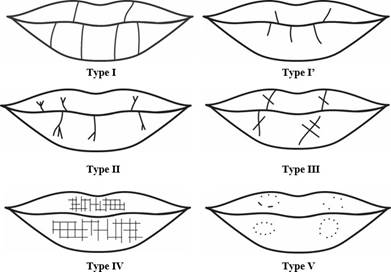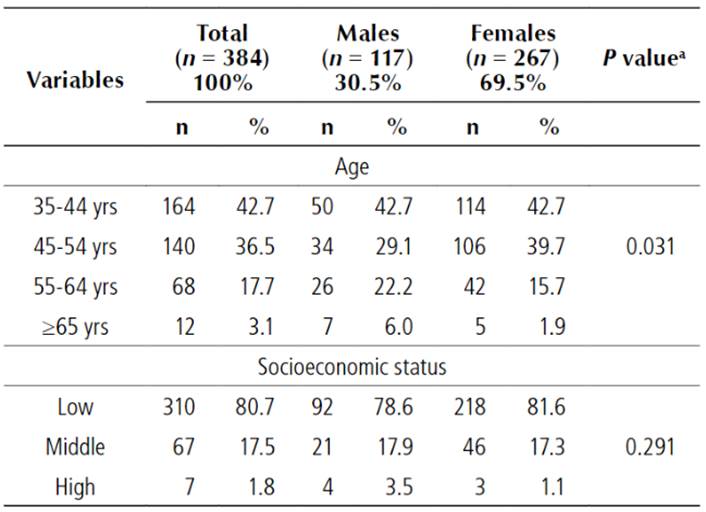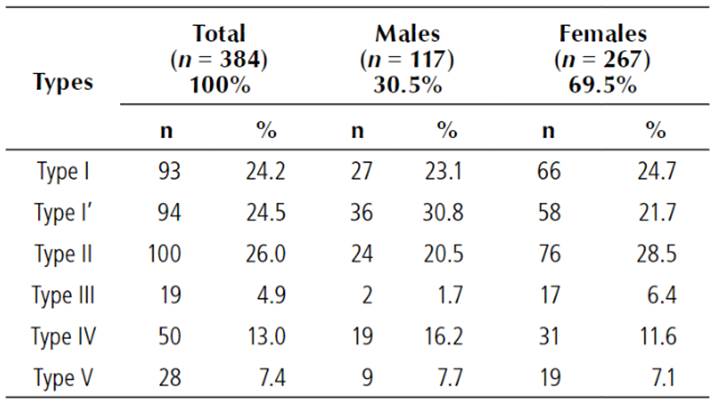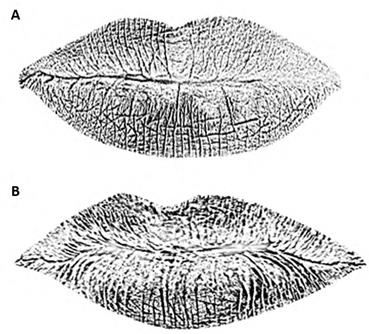INTRODUCTION
Forensic science involves diverse scientific disciplines that apply their particular expertise to law, enforcement criminal, civil, legal, and judicial matters1. It could be considered an integral part of the judicial system because forensic science is one of the primary means through which ‘democratic governments fulfill one of the main obligations to their citizens: public safety insurance in a just manner’2. However, in the last decades, this science has been linked to humanitarian actions3 and human rights proceedings.
Since the first resolution adopted in 19924, the United Nations (UN) has emphasized that forensic sciences can contribute to the investigation of human rights violations such as people reported missing in armed conflicts, especially those who are victims of serious violations of International Humanitarian Law or Human Rights Law. In this regard, the General Assembly invited all the actors concerned in these situations “to further their engagement in order to follow forensic best practices as they apply to preventing and resolving cases of missing persons in connection with armed conflict”5. For this purpose, the Committee on Enforced Disappearances, which is the body of independent experts that monitors the implementation of the UN Convention for the protection of all persons from enforced disappearance, has just adopted the Guiding Principles for the Search for Disappeared Persons6. These principles aim to serve as guidelines for the consolidation of good international practices on mechanisms, modalities, procedures, and methods to search effectively for missing persons. Principle 7 establish that, when the disappeared person is found dead, “the search shall be considered as completed when his or her remains have been fully identified and handed over to his or her family members or relatives in a dignified manner”.
The increasing relevance of these practices that connect human rights and forensic sciences has led to the emergence of a new field: Humanitarian Forensic Action (HFA). This area, which was first used by the International Committee of the Red Cross (ICRC) has been defined as “the application of the knowledge and skills of forensic medicine and science to humanitarian action, especially following conflicts or disasters”7. The origins of the HFA can be found both in Latin America (mainly in the forensic efforts of searching and identifying the disappeared by Argentine dictatorship) as well as in the broader framework of International Law, through the rules and practices of International Human Rights Law and International Humanitarian Law promoted by the UN or the ICRC8,9,10.
Unfortunately, there is no reliable and unified information in Colombia on the total number of disappearances. According to the National Center for Historical Memory, more than 80,000 persons have been reported missing in the country11. The Final Peace Agreement between the Government and the Revolutionary Armed Forces of Colombia (FARC-EP) established the basis of a comprehensive system for truth, justice, reparation, and non-repetition12. It included a Special Unit for the Search for Persons deemed as Missing, whose objective is to search for the individuals missed in the context of and due to the armed conflict. The Special Unit has joined the already established Commission on the Search for Disappeared Persons and the National Register of Disappeared Persons, among other specific mechanisms. Nonetheless, serious violations of human rights continue in Colombia, including forced disappearances, with particular concern in the southern part of the territory. One of the novel aspects of the application of HFA in human rights is that forensics could serve, beyond the identification of persons and the collection of evidence, to set up new and more efficient preventive strategies13. On this matter, forensic dentistry may assume a new role in human identification for the purpose of preventing human rights violations14.
Personal identification is based on the comparison of two pieces of information, one known (or antemortem in corpses) and other obtained from the victim (or postmortem in corpses). A database should be created in the region in order to obtaining these known (or antemortem) lip prints from the local population. For this purpose, public policies need to be created and developed. These policies, which must include a personal identification protocol, should create awareness regarding the importance of prevention strategies.
Even though there is no doubt of the role of forensic science in promoting the detection, investigation, and successful prosecution of serious crimes, there are still some gaps. Sometimes, this science does not meet scientific standards of independence and impartiality reporting bias in the published literature15. For this reason, using more preconditions for forensic identification in the population could be very useful and appropriate to armed conflicts and transitional justice situations. Forensic dentistry is focused on the assessment of dental evidence to identify an individual, in order to help the authorities to establish the identification of a case16. This is evident especially in disasters that include a large number of victims, such as natural catastrophes, victims of violent crimes, or armed conflicts. Furthermore, this branch works on dental records, bite-marks, aging of individuals through dentition, dental/ oral injuries to resolve civil issues or criminal matters, and determining dental malpractice complications or negligence situations.
The analysis of lip prints is a procedure that consists of visual inspection of crack patterns created by the elevations and depressions on the labial mucosa surface. The oily and moist secretions from sebaceous and salivary glands located at the vermillion border, and subsequent moisturization from the tongue enables the formation of a latent lip print whenever there is lip contact, leaving behind an important form of transfering evidence17. Additionally, lip prints in the same way that finger prints do, may demonstrate that are sufficiently unique to distinguish one person from another, with an insignificant decrease in the recognition accuracy for identical twins18. Moreover, lip prints may have a particular repetition pattern in family members, which may help in their hierarchy identification19. There are diverse classifications of lip prints; however, the Suzuki and Tsuchihashi's lip prints classification is the most commonly used for recording these patterns20,21,22,23,24. It is a relatively straightforward and cost-effective method that could be an alternative in developing countries, especially in those that address massive violations of human rights. Studies related to background origin are important for confirming identification. The aim of this study was to determine the lip patterns of a southern Colombian population in order to add evidence of preconditions methods for forensic issues as part of humanitarian forensic action.
METHODS
Study design, settings, and sample
A cross-sectional study was performed among voluntary participants attending the Dental Clinic at the Universidad Cooperativa de Colombia, Pasto, Colombia. The clinic was opened to the public in 1999. It is a student-run clinic for the attention of individuals of the surrounding and non-surrounding communities, especially those who are unable to access dental care. Annually, around 2,000 adults receive dental treatments in this setting. The Dental Clinic provides services such as screening/diagnosis, preventive and operative dentistry, periodontal treatments, oral rehabilitation, endodontic treatments, extractions, oral surgery, among others.
In order to recruit more adult patients in the Dental Clinic, a probabilistic sample of ³ 35 years old adults was estimated taking into consideration the 2005 Colombian census, which aimed to cover the population of our municipality as well as all of the regions of the country. This census registered a total of 138,000 people in our city. We calculated a representative sample size for this population at 95% level of confidence with a 5% of margin of accuracy and an expected prevalence of 50%. A sample of 384 individuals was estimated, and sex was taken over a male to female ratio of 1:1. It was recruited from February 2018 to March 2019. This study excluded people who had any type of medical condition with signs of disease in the lips such as sore, bumps, blisters, inflammation, scars, herpes, ulcers, or perioral dermatitis. All volunteers included in this investigation gave written informed consent for their participation in the study.
Measures and procedures
To obtain the lip prints, the lips of the participants were cleaned using wet tissue paper and dried with a facial tissue. A Vogue® dark red colored lipstick (Laboratorio Cosméticos Vogue S.A., Bogotá, Cundinamarca) was applied drawing the lip shape; only one layer of it was spread with a Vogue® eyeshadow brush sponge (Laboratorio Cosméticos Vogue S.A., Bogotá, Cundinamarca) in the participants. The lipstick was removed with Kleenex® (Kimberly- Clark Professional, Dallas, United States) facial tissues or Familia® (Grupo Familia, Medellín, Colombia) wet wipes. Two impressions of the lips were made on a 100 gm Reprograf® white bond paper (Propal Carvajal, Cali, Colombia) when those were required, especially with older participants. Shortly thereafter, all collected samples were covered with a 48mm transparent adhesive tape Jaza Tape® (Intercomercio JAO SAS, Bogotá, Colombia) and some of them were digitally photographed with zoom with Nikon® Camera 4.5-81.0 mm. 18.1 megapixels, OLED 3.0. (Kabushiki-gaisha Nikon; Shinagawa, Tokyo, Japan). The photographs presented in the article were taken by only one researcher, and according to the next standardization: The selected lip prints were placed over a table that was close to a window side, they were taken in the morning between 9-10 a.m. with natural daylight, the camera flash was disabled, and the distance used between the lip prints and the camera lense was 10.2 cm.
The impressions were analyzed using a JD-01Y LED® dental negatoscope (viewing area: 350×150mm) (Changsha Jinde Technology Co., Ltd., Hunan, China). The samples were classified as Type I, Type I’, Type II, Type III, Type IV, or Type V according to the Suzuki and Tsuchihashi’s classification25. Briefly, the criteria of this classification was as follows: Type I, clear cut grooves running vertically across the lips; Type I’, straight grooves which disappear halfway instead of covering the entire lip; Type II, fork grooves in their course; Type III, intersecting grooves; Type IV, reticulate grooves and Type V, undetermined (Figure 1).
One trained and calibrated examiner conducted all lip prints’ categorizations. After studying lip morphology, cartoons, and photographs of the Suzuki and Tsuchihashi’s classification, the evaluador assessed around 10% of the sample (40 cases). The time interval between the 1st and 2nd evaluation was one-week. When there was a disagreement, the examiner studied the case and re-assessed the lip print. The intra-examiner Cohen’s Kappa index was 0.74; P<0.001. These participants’ lip prints were included in the whole sample since the index obtained was interpreted as “substantial”26.
Additional information on demographic characteristics was obtained. These included age of the participants [measured in years and classified in four groups (35-44 years), (45-54 years), (55-64 years) and ³ 65 years]; sex [coded as male and female according to World Health Organization definition]27; socioeconomic status [classified according to criteria based on housing quality indicators set by the Colombian government as low, middle and high].
Statistical analysis
Descriptive analysis was used to determine the sample characteristics, and a χ2 test was calculated to analyze independence between males and females for these categorical data. There were no missing data. The level of significance was set at P<0.05. Data were analyzed using SPSS software version 25 (IBM SPSS Statistics, Armonk, New York, USA).
RESULTS
A total of 384 participants were enrolled in this study. About two-thirds of the individuals were females (male/female ratio was 1:2.3). Table 1 describes the sample distribution according to the socio-demographic characteristics (age, sex and socio-economic status). There was a higher frequency of people in the age-group of 35-44 as compared to the 55-64 and ³65 years-old groups (P=0.031).
Type I and I’ (48.7%) were the most commonly lip prints seen in this sample, followed by Type II (26.0%). Males presented more frequently the Type I’ (30.8%) while females the Type II (28.5%) classification; however, the observed difference was not statistically significant (Table 2).
In Figure 2 we showed some frequent lip prints patterns in our community, which were obtained from the lipstick marks.
DISCUSSION
The purpose of this research was to analyze lip prints of a southern Colombian population in order to identify patterns for forensic identification. Cheiloscopy (from the Greek language cheilos: lips & skopein: see) is a forensic research technique that evaluate traces of the lips28. It is possible to identify lip patterns as early as the sixth week of intrauterine life. Subsequently, lip groove patterns rarely change29, resisting many afflictions30. The imprint of the lips can be found on the surface of the cups, glasses, cigarette butts, doors, plastic bags, or in natural disasters or armed conflicts directly on faces. Sometimes, they may be less exposed to physical damage than fingerprints. Finding lip prints is not difficult.
According to Susuki and Tsuchihashi’s classification25, Type I (I and I’) was the most popular mark in this sample. This finding was similar to the reported in the studies conducted by Venkatesh and David31 in Karnataka; by Thermadam et al.32 in Calicut (Kerala); by Alzapur et al.24 in Telangana, by Kapoor and Badiye in Maharashtra (Marathi)22, and by Kaul et al.33 in an study carried out in Indian population. However, our results are different from those observed by Sharma et al.34 in men of Kadrabad (Monidagar), India and by Abdel Aziz et al.35, and in Egyptian and Malaysian populations where Type III pattern was the most predominant. In addition, our results were different to those found by Šimović et al.36 in an study from Croatia, in which Type II was the most frequent.
Interestingly, a lip print may be a more important identification tool for females than males. In our research, they accepted to use a lipstick more easily than men did. For that reason, the sex ratio of male/female participation was 1:2.3 instead of 1:1 according to our probabilistic sample. Regarding masculinity characteristics, men often “prefer to risk their physical health and well-being rather than be associated with traits they or others may perceive as feminine”37. One solution to this problem would be to change the color of lipstick (e.g. black). But, if males attitude persists, lip prints could very useful to identify females, as a way to respect social practices and cultural beliefs. Unfortunately, Colombia has high rates of violence against women38. Cases of domestic and sexual violence, as well as, disappearances and kidnappings, are especially serious and frequent. Besides, cases related to drug trafficking, prostitution, and human trafficking can constantly be observed (young girls and adolescents are mainly affected by these forms of violence). Therefore, a gender-based approach seems to be necessary and relevant in the region. The difference in participation between males and females may not necessarily be a problem in a future.
Forensic dentistry may play a vital role in the detection and resolution of personal identification in the context of massive human rights violations and armed conflicts. Since determining the identity of a missing person could be a very difficult procedure, using more preconditions such as lip prints would contribute to improve the identification process. Moreover, it is the least invasive, cost-effective, and a relatively simple procedure among all human identification methods that could be very useful in developing countries and transitional justice societies such as Colombia, especially in villages where technology and information systems are scarce. Furthermore in recent times, experts have highlighted this technique as a preventive approach. It is more difficult to have crimes unpunished if the number of evidences increase. Even though creating a lip print database could be a challenge, the inclusion of dental professionals working for public health clinical centers from confict zones in rural areas, could be a proper solution. It implies that these professionals, which traditionally are not involved in the construction of peace, justice and promotion of human rights could participate in these issues. Due to of the mentioned above, we consider that Colombian public institutions will benefit greatly from this method.
We have some limitations in this study. For example, our sample was not randomized and we analyzed voluntary consecutive cases which are subject to inaccuracies and bias. Therefore, the results should be interpreted with caution. The gender issues also may influence the proportion of the classifications in males. Our comparisons may be inconsistent since some of the studies we quoted had small samples (no more than 200 individuals). Additionally, comparison with other Latinoamerican studies was limitated because those studies were different to this investigation in relation to the methods used, for example, the lip prints’ classification39 as well as the inclusion of very small samples40. Further research is required to provide high quality evidence about lip prints in different locations.



